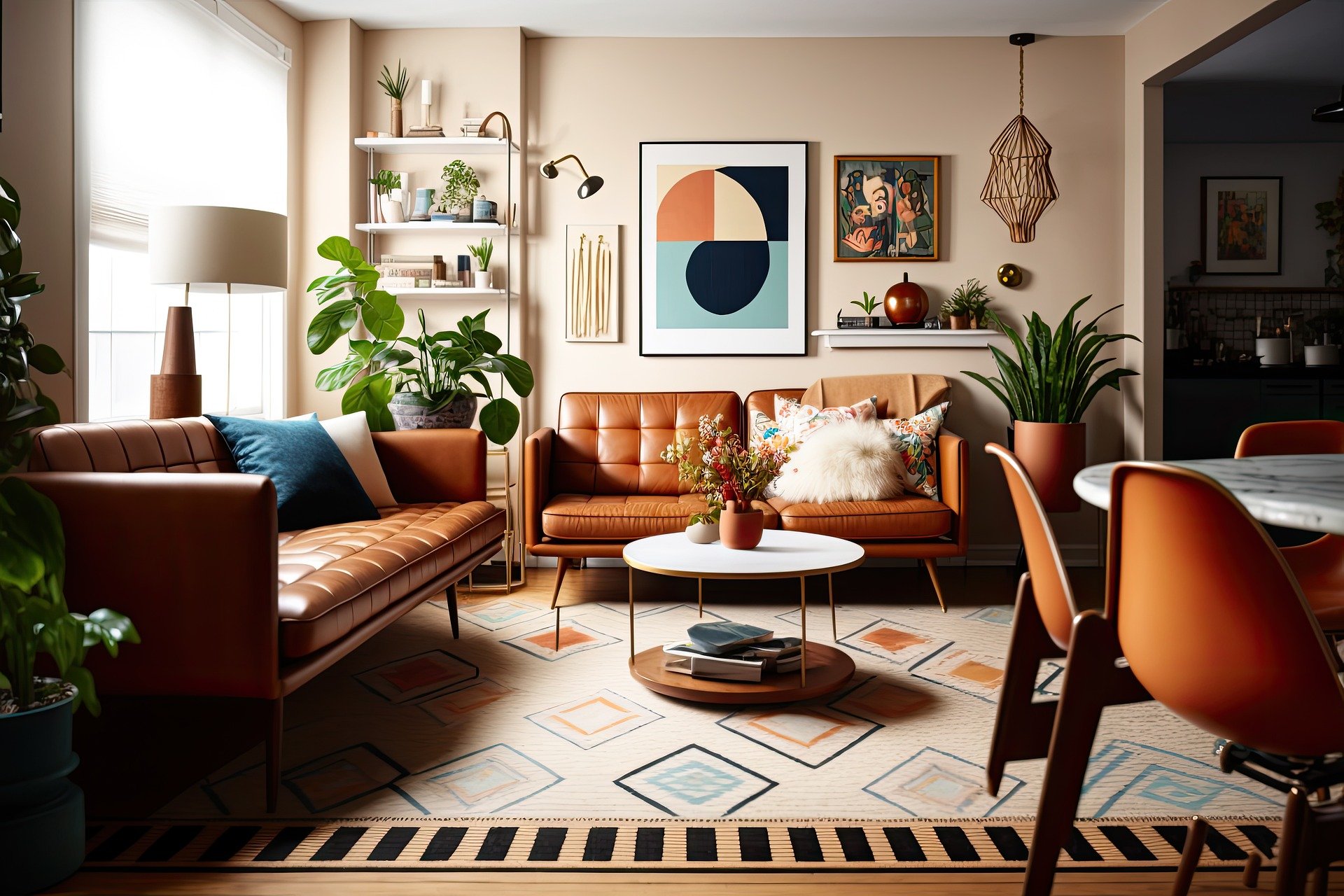Biomorphic Textiles: Nature-Inspired Weaves for Modern Interiors
Imagine running your fingers across a sofa cushion that mimics the intricate patterns of a butterfly's wing, or draping curtains that echo the fluid movement of ocean waves. Welcome to the world of biomorphic textiles, where nature's most captivating forms are woven into the very fabric of our living spaces. This innovative approach to textile design is revolutionizing interior aesthetics, blending organic beauty with cutting-edge technology to create truly immersive home environments.

In the early 20th century, artists like Henri Matisse and Jean Arp explored biomorphic forms in their work, but it wasn’t until the digital age that these organic shapes could be faithfully reproduced in textiles. The advent of computer-aided design (CAD) and precision weaving technologies in the late 1990s marked a turning point, allowing designers to capture nature’s complexity in fabric form.
Techniques and Technologies Behind Biomorphic Textiles
The creation of biomorphic textiles involves a fascinating blend of traditional craft and cutting-edge technology. Designers often begin by studying natural forms through microscopy or 3D scanning, capturing intricate details invisible to the naked eye. These images are then translated into weave patterns using specialized software.
Advanced looms, capable of weaving complex structures, bring these designs to life. Jacquard looms, which use punch cards or digital inputs to control individual threads, are particularly well-suited for creating detailed biomorphic patterns. Some manufacturers are even experimenting with 3D printing techniques to add texture and dimension to fabrics, mimicking the tactile qualities of natural surfaces.
The Aesthetic Impact of Nature-Inspired Weaves
Biomorphic textiles introduce a new level of visual interest and tactile appeal to interior spaces. From curtains that mimic the delicate veining of leaves to upholstery fabrics that replicate the iridescent scales of fish, these textiles bring the outdoors in, creating a sense of harmony and connection with nature.
Color palettes in biomorphic textiles often draw from nature’s own hues, ranging from subtle earth tones to vibrant tropical shades. The interplay of texture and color in these fabrics can transform a room, adding depth and movement to otherwise static spaces. For example, a rug designed to mimic the ripples of sand dunes can create an illusion of flow across a floor, while wallcoverings inspired by tree bark can add a sense of organic warmth to walls.
Practical Applications in Home Design
Biomorphic textiles are versatile enough to be incorporated into various aspects of home decor. They’re particularly effective as statement pieces - a sofa upholstered in fabric mimicking coral patterns can become a captivating focal point in a living room. Similarly, bedding that replicates the soft, billowing forms of clouds can transform a bedroom into a serene retreat.
These textiles also excel in creating cohesive design themes. For instance, a nature-inspired motif can be echoed throughout a space - from curtains to throw pillows to area rugs - creating a harmonious and immersive environment. The subtle variations inherent in biomorphic designs also make them ideal for mixing and matching, allowing for creative layering of textures and patterns.
The Sensory Experience of Biomorphic Fabrics
Beyond their visual appeal, biomorphic textiles offer a rich tactile experience. Designers are increasingly focusing on creating fabrics that not only look like natural elements but feel like them too. This attention to texture adds a new dimension to interior design, engaging multiple senses and creating more immersive spaces.
For example, fabrics that mimic the softness of moss or the roughness of tree bark can add unexpected tactile elements to a room. This sensory aspect of biomorphic textiles can have a profound impact on the feel of a space, potentially influencing mood and well-being by fostering a stronger connection to nature.
Sustainability and Biomorphic Textiles
As the home decor industry faces increasing pressure to adopt more sustainable practices, biomorphic textiles are at the forefront of eco-friendly innovation. Many manufacturers are using the principles of biomimicry - studying and emulating nature’s processes - to create more sustainable production methods.
Some companies are developing fabrics that not only look like natural elements but also mimic their functional properties. For instance, textiles inspired by lotus leaves are being engineered to repel water and dirt, reducing the need for chemical treatments and frequent cleaning. Others are exploring biodegradable materials and closed-loop manufacturing processes, inspired by nature’s own cycles of growth and decay.
The Future of Biomorphic Textiles
As technology continues to advance, the possibilities for biomorphic textiles are expanding. Researchers are exploring smart fabrics that can change color or pattern in response to environmental stimuli, mimicking the adaptive qualities of natural organisms. There’s also growing interest in combining biomorphic design with functional elements, such as textiles that purify air or regulate temperature.
The future may also see a deeper integration of biomorphic textiles with other elements of interior design. Imagine wallpapers that seamlessly blend into 3D-printed decorative elements, or fabrics that interact with lighting systems to create dynamic, nature-inspired environments.
In conclusion, biomorphic textiles represent a fascinating convergence of nature, technology, and design. By bringing the organic forms and textures of the natural world into our homes, they offer a unique way to create spaces that are not only visually stunning but also deeply connected to the world around us. As this trend continues to evolve, it promises to reshape our understanding of interior design, blurring the lines between indoor and outdoor spaces and fostering a deeper appreciation for the beauty and complexity of nature.





